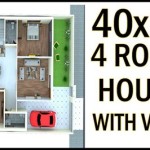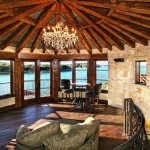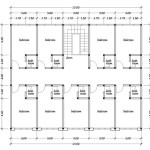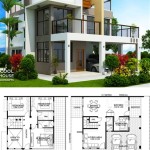10 Lakhs Budget House Plans In Kerala
Building a home in Kerala, a state renowned for its lush landscapes and distinctive architecture, presents unique challenges and opportunities, especially when working with a limited budget. The concept of constructing a house within a 10 lakhs budget requires meticulous planning, efficient resource management, and a pragmatic approach to design and construction. This article explores the intricacies of achieving this goal, focusing on various strategies and considerations that prospective homeowners in Kerala can leverage to realize their dream of owning a home without exceeding their financial constraints.
The 10 lakhs budget serves as a significant constraint, demanding a departure from conventional construction methodologies and a focus on cost-effectiveness. It necessitates a thorough understanding of local material costs, labor rates, and permissible construction techniques within the region. Feasibility is highly dependent on the size and complexity of the design, as well as the location of the property. Land acquisition costs are excluded from this budget, assuming that the land is already owned or will be acquired separately.
The initial stage of planning involves defining the essential requirements of the house. This includes determining the number of bedrooms, bathrooms, living spaces, and kitchen area. Prioritizing needs over wants is crucial. A minimalist design approach is often the most viable option, foregoing elaborate architectural features and focusing on functionality and efficient space utilization. The design should also incorporate local climate considerations, such as natural ventilation and shading, to minimize long-term energy costs.
Selecting the right architectural design is pivotal. Simple, rectangular designs with minimal ornamentation are generally more economical to construct than complex, multi-story structures. The use of locally available materials, such as laterite stone, which is abundant in Kerala, can significantly reduce material costs. Standardized designs, which avoid custom or complex detailing, also contribute to cost savings.
Efficient space planning is essential. Open floor plans that combine living and dining areas can reduce the need for internal walls, thereby saving on both material and labor costs. Multi-functional spaces, such as a combined living and dining area, can maximize usable space within a limited footprint. Careful consideration should be given to the placement of windows and doors to optimize natural light and ventilation, reducing the reliance on artificial lighting and air conditioning.
Key Point 1: Material Selection and Cost Optimization
The choice of building materials is a critical factor in managing the construction budget. Opting for locally sourced materials not only reduces transportation costs but also supports local economies. Laterite stone, bricks, and locally available timber are generally more affordable options than imported materials. Cement and steel consumption should be minimized by adopting construction techniques that prioritize load-bearing walls and simple roofing systems.
The use of alternative building materials should also be considered. Stabilized mud blocks, for instance, are an environmentally friendly and cost-effective alternative to traditional bricks. These blocks can be produced on-site, further reducing transportation costs and providing employment opportunities for local labor. Pre-fabricated building components, such as roofing sheets and door frames, can also streamline the construction process and reduce labor costs.
Negotiating prices with suppliers is an essential skill. Obtaining quotes from multiple vendors and comparing prices can lead to significant cost savings. Bulk purchasing of materials can also qualify for discounts. Maintaining a detailed record of material purchases and expenses is crucial for tracking the budget and identifying potential areas for cost reduction.
Waste management is another important consideration. Minimizing material wastage through careful planning and precise cutting can prevent unnecessary expenses. Leftover materials can be repurposed or sold, further reducing the overall cost of construction. Implementing a robust waste management system also contributes to environmental sustainability.
Key Point 2: Labor Management and Construction Techniques
Labor costs constitute a significant portion of the overall construction budget. Employing skilled and experienced laborers is essential for ensuring quality workmanship and minimizing rework. However, careful negotiation of labor rates is also necessary to stay within budget. Exploring alternative labor models, such as engaging daily wage laborers rather than contractors, can potentially reduce costs.
Simplifying the construction process through the adoption of efficient building techniques is crucial. Load-bearing construction, which distributes the weight of the structure across the walls, can reduce the need for reinforced concrete columns and beams, thereby saving on material costs. Pre-cast concrete elements, such as lintels and window sills, can also expedite the construction process and reduce labor time.
Owner participation in the construction process, where feasible, can also contribute to cost savings. This can involve tasks such as site clearing, material transportation, or basic carpentry work. However, it is important to ensure that the owner possesses the necessary skills and knowledge to perform these tasks safely and effectively. Supervision of the construction process is essential to ensure that work is carried out according to the plans and specifications.
Maintaining a clear and consistent line of communication with the construction team is crucial for avoiding misunderstandings and delays. Regular site meetings should be held to discuss progress, address challenges, and ensure that everyone is on the same page. Accurate record-keeping of labor hours and expenses is essential for tracking the budget and managing costs effectively.
Key Point 3: Design Optimization and Architectural Considerations
The design of the house should be optimized for cost-effectiveness. Simple, rectangular designs with minimal ornamentation are generally more economical to construct than complex, multi-story structures. The use of open floor plans can reduce the need for internal walls, thereby saving on both material and labor costs. A single-story structure, where feasible, is often more cost-effective than a multi-story building.
Roofing is a significant cost component of the construction project. Simple sloping roofs with minimal overhangs are generally more affordable than complex, multi-tiered roofs. The choice of roofing material should be based on cost, durability, and aesthetic considerations. Clay tiles, concrete tiles, and galvanized iron sheets are all viable options, each with its own advantages and disadvantages.
Window and door openings should be standardized to reduce material wastage and simplify the fabrication process. The use of wooden frames, which are readily available and relatively inexpensive, can be a cost-effective option. However, it is important to ensure that the wood is properly treated to prevent decay and insect infestation. Aluminum frames are another option, offering durability and low maintenance, but may be more expensive than wooden frames.
Landscaping and exterior finishes should be kept to a minimum to reduce costs. Simple landscaping with native plants can enhance the aesthetic appeal of the house without requiring extensive maintenance. Exterior painting should be limited to essential areas, such as window and door frames, to protect the building from the elements. The use of natural finishes, such as exposed brick or stone, can also reduce the need for exterior painting.
Plumbing and electrical systems should be designed for efficiency and cost-effectiveness. Minimize the length of pipe runs and electrical wiring to reduce material costs. Use energy-efficient fixtures and appliances to minimize long-term energy consumption. Consider installing solar water heating systems to reduce reliance on electricity for water heating.
Interior finishes should be simple and functional. Avoid expensive flooring materials, such as marble or granite, and opt for more affordable alternatives, such as ceramic tiles or concrete flooring. Painting the interior walls with neutral colors can create a bright and spacious feel without requiring expensive decorative finishes. Minimize the use of built-in furniture and opt for modular furniture that can be easily moved and rearranged.
The feasibility of constructing a house within a 10 lakhs budget in Kerala depends on a combination of factors, including the location of the property, the design of the house, the choice of building materials, and the efficiency of the construction process. Careful planning, resource management, and a pragmatic approach are essential for achieving this goal. By prioritizing needs over wants, adopting cost-effective construction techniques, and optimizing the design for efficiency, it is possible to realize the dream of owning a home in Kerala without exceeding financial constraints.
Sustainability should also be factored into the design. Incorporating rainwater harvesting systems can provide a reliable source of water for domestic use, reducing reliance on municipal water supply. Utilizing solar energy for lighting and water heating can reduce long-term energy costs and minimize the environmental impact of the house. Designing the house for natural ventilation and shading can reduce the need for air conditioning, further contributing to energy savings.
Building a home on a budget requires a significant investment of time and effort. It is important to be prepared to make compromises and to prioritize essential features over non-essential ones. The process can be challenging, but the reward of owning a home that is both affordable and functional is well worth the effort.
In conclusion, while adhering to a 10 lakhs budget for house construction in Kerala demands meticulous planning and resourcefulness, it is an achievable goal. Prioritizing cost-effective materials, efficient labor management, and optimized design are fundamental. Continuous evaluation and adaptation throughout the construction process are crucial for ensuring adherence to the budget and successful completion of the project.

10 Lakhs Budget House Plan Plans Small Modern Architectural

Rs 10 Lakh Kerala House Plan Design 30x40 Plans

A Wonderful Gift This Chelari House Built On Rs 10 Lakh Is Spectacular Lifestyle Decor English Manorama

House Plan 635 Sqft Kerala Design 10 Lakh Budget Home Haneed Anugrahas

Low Budget House Cost Under 10 Lakhs Kerala Design Small Front

Low Budget House Cost Under 10 Lakhs Kerala Design Small Front

Top 10 Low Budget House Elevation Plan Lakhs 1000 Sq Ft Design With Home
Rs 12 Lakh Budget Home In Kerala Design Bloglovin

10 Lakhs Cost Estimated Modern Home Plan Everyone Will Like House Plans Gallery

Small Modern Double Floor House 1000 Sft For 10 Lakh Elevation Interiors








